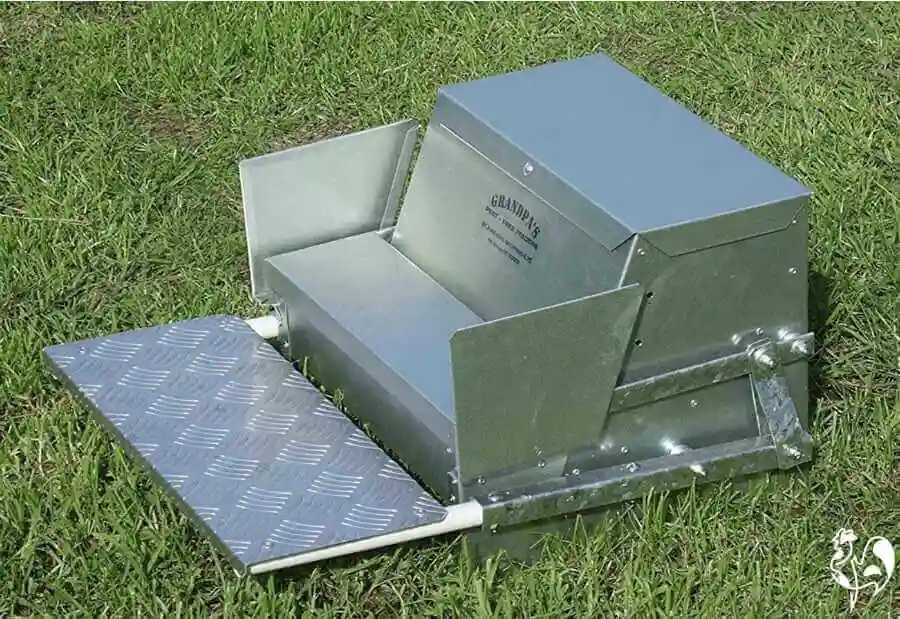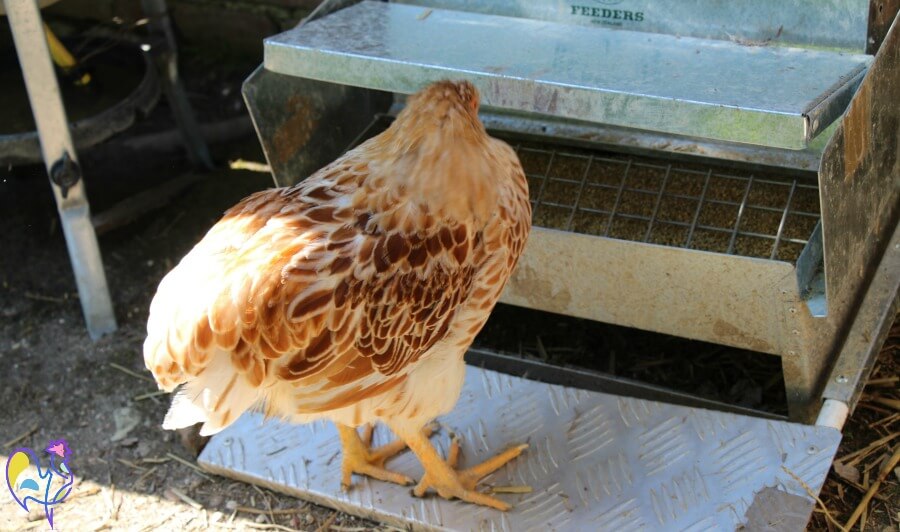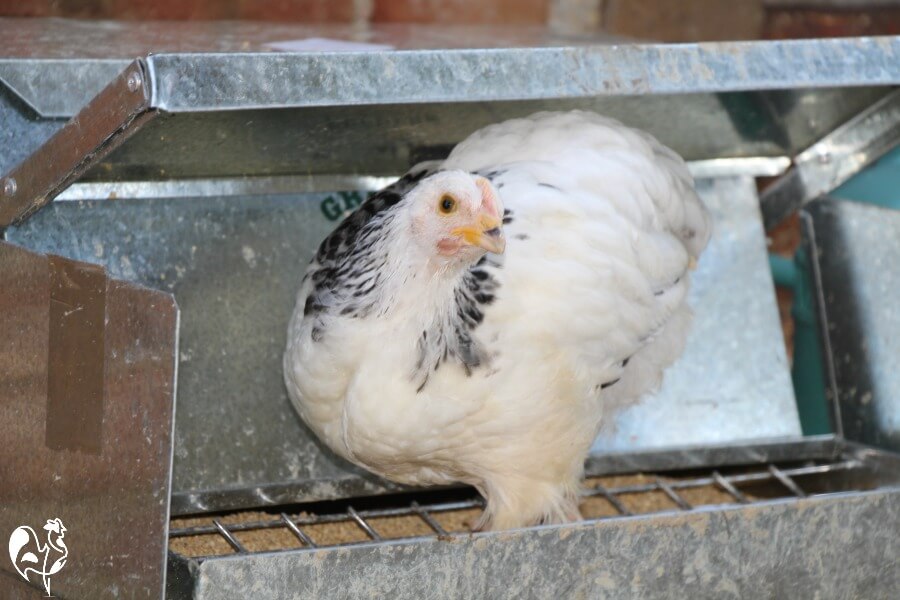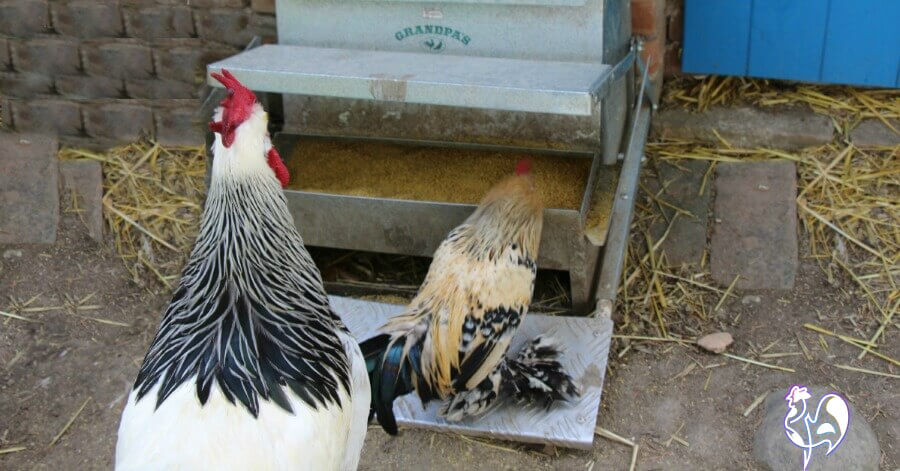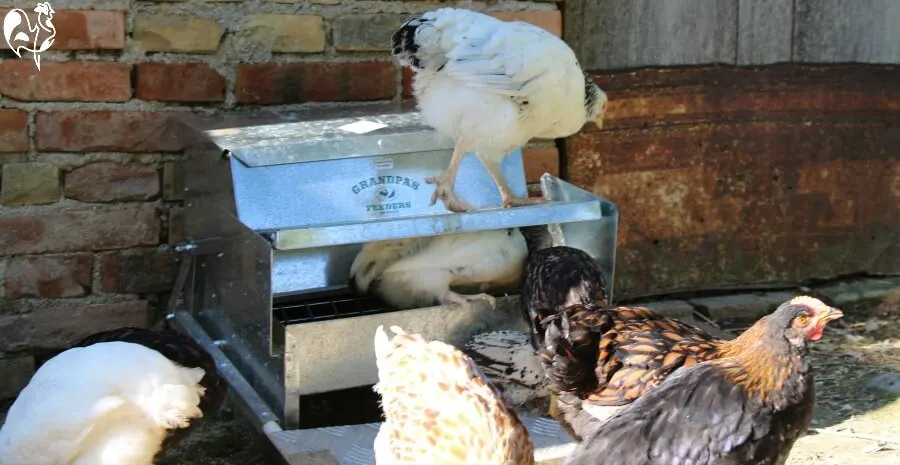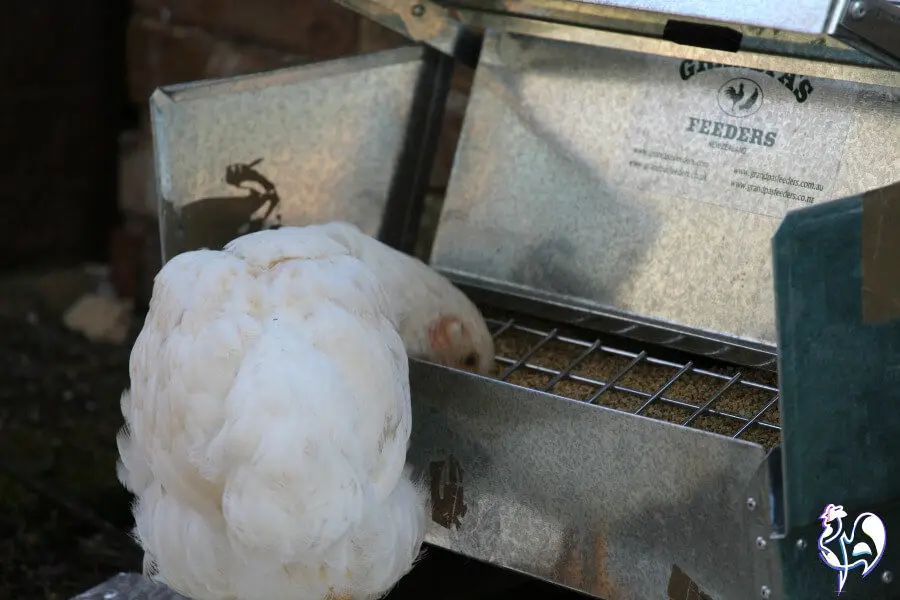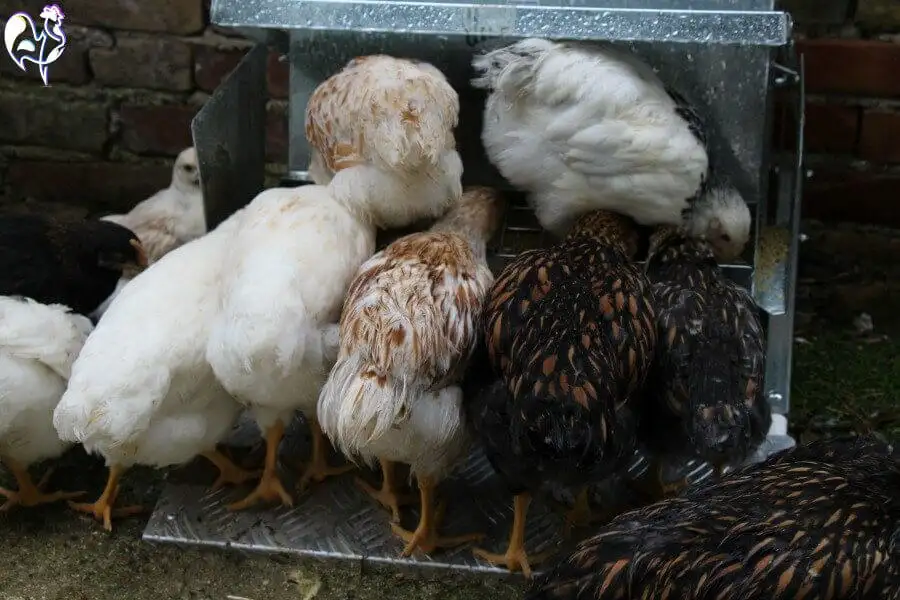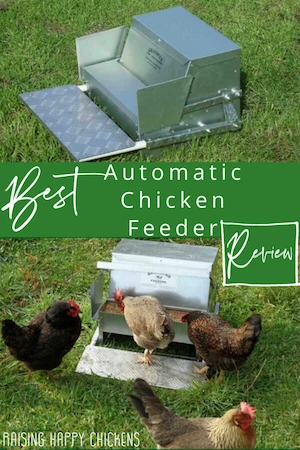Why Grandpa’s is the best automatic chicken feeder...
...and why I’ve used it for 15 years!
Do you have a chicken feeder that plays open house to wild birds and rodents?
If you haven't noticed it yet, I guarantee you will...
How do I know? Because it happened to me. And by the time I realised I had a problem, I had no fewer than three rats' nests.
It’s a common complaint from non-chicken owners: that chickens attract rats. Except – it’s not the chickens. It’s the grain. And I was basically running an all-you-can-eat buffet.
Once I understood that, I knew the grain-fests had to stop. Rats can bring disease to the chicken house – and to humans.
So I got serious. First I had to get rid of the rats. Then I had to make sure they didn’t come back.
I invested in two things: an electric rat trap, and Grandpa’s automatic feeder.
Did it work?
Put it this way: I’ve not had one single, solitary rat since. And that was nearly 15 years ago.
If you purchase a product through links on this page I receive a small commission at no cost to you. I was not paid for writing this review, and I did not receive it as a freebie. I'm suggesting it for you because I own it and love it, and I think you would, too. For more information please see this policy.
What's an "open" feeder and why is it a problem?
It's any type of feeder which leaves even a small amount of grain exposed. That's all it takes for rats, mice and wild birds to move in.
Many popular feeders for small flocks fall into this category: bucket or pipe style with openings or trays at the bottom for chickens to peck from, or for the chicken to put its head inside.
They might look good, but they're all an open invitation to rodents. Rats and mice can smell grain from three miles away, squeeze through the tiniest of gaps, and jump up to three feet.
So open feeders very quickly become a kind of rat-Donald's.
I found out the hard way. This was the open feeder I used before I found Grandpa's.
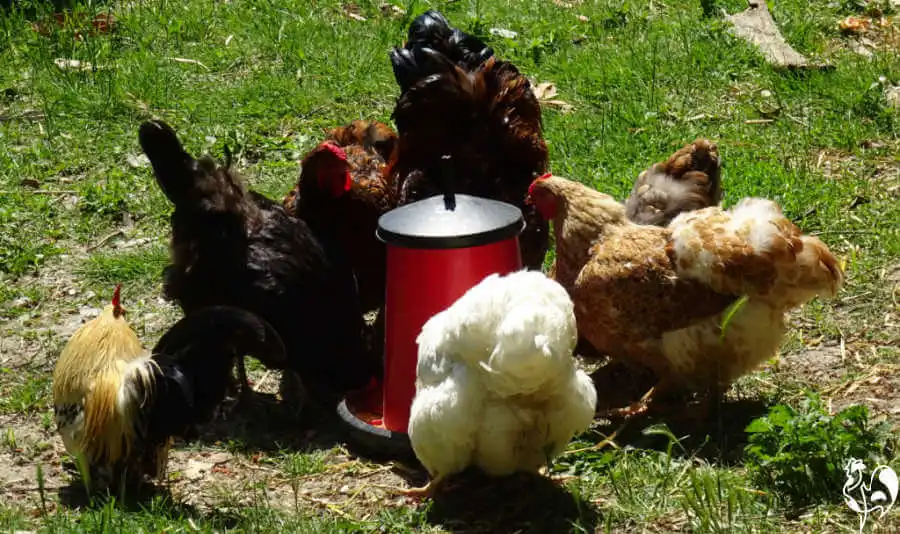 My flock eating from the open feeder I used before switching. It kept them fed – and fed rats, too.
My flock eating from the open feeder I used before switching. It kept them fed – and fed rats, too.It worked well for the chickens and (I thought) for me. The hopper filled the tray as they ate and it kept several chickens fed for several days without needing a top-up.
But one morning, I opened the lid and found a rat staring back at me from inside the drum. It was having its own private grain-fest.
That's when I knew it was time for a change.
Why I chose Grandpa's feeder (and why I still use it).
When I started researching rodent-proof feeders I kept seeing the same advice: the best way to stop rodents and wild birds (who can bring disease, including the dreaded bird flu) is to have a feeder that's fully enclosed.
Grandpa's fitted the bill. It's rodent-proof, predator-proof and waterproof. It's stood the test of time – it's been on the market since 1995.
I bought one of the first, and in those days had to ship it to Europe all the way from the makers in New Zealand! These days, you can buy one directly from Amazon.
If you're ready to buy, click on any of the photos on this page, or click here to buy now from Amazon.
(And thanks to my chickens for modelling their Grandpa's feeder so well!).
The design is simple but clever. The hopper lid fits snugly, with overlapping sides and locking pins to keep it firmly in place against the highest of winds and the handiest of lock-picking raccoons.
It's everything I needed in a feeder: safe, sturdy and built to last.
How Grandpa's feeder works: simple, smart and chicken-proof!
The idea is simple. The chicken stands on the treadle plate at the front. That triggers a lever system which lifts the lid of the grain tray.
Here, Miss Lulu demonstrates how the feeder opens when she steps up...
Once she steps off, the lid closes again, keeping the grain safe.
Inside the hopper, the sloped back wall means grain always flows smoothly into the tray. Nothing gets stuck.
And to stop the chickens from scratching feed everywhere, as they love to do, Grandpa's added two special features:
- an anti-scratch bar, so they can't stand in the grain tray
- side panels, so no grain spills over the side.
Here, no matter how she might try, Miss Matilda cannot scratch grain out of the feeder.
This means less waste, a cleaner chicken run and, most importantly – no rats! These features were actually added after customer feedback.
Don't you just love a company that listens?
Even bantams can use this chicken feeder!
My tiny Lemon Millefleur Sablepoot, Bono, uses this same feeder as the larger hens without a problem.
Originally, he waited for one of the big girls to step on the treadle, and jumped on beside them. But eventually, he worked it out for himself.
Here he is, taking his turn at my standard sized feeder while one of my Light Sussex hens stands in line behind.
If you have bantams you may have to start by putting a temporary weight on the treadle to help bantams open the lid, until they get the hang of it.
With a little encouragement, even small and lightweight breeds can learn to use Grandpa's feeder with confidence.
What stops rodents from opening the feeder?
You might wonder: couldn't a rat or mouse step onto the treadle and help itself?
In theory, perhaps, but in reality, no. The lid only opens with a certain weight, and that weight is more than any rat or mouse could manage.
Even if they tried, the design makes it near impossible: the hopper is set far enough back that rodents couldn't stay on the treadle and reach the grain at the same time.
In all the years I've used this automatic chicken feeder, I've never seen a single sign of rodent activity – no droppings, no gnaw marks, and definitely no rat staring up at me from inside.
It's built like an anti-rodent Alcatraz.
Will it hurt my chickens?
One of the most common questions I'm asked is whether chickens get injured using Grandpa's feeder – particularly whether their heads can become caught in the lid as it shuts.
The answer is "no". They instinctively move their head back, before the lid closes.
I've used mine for over 15 years years now with flocks up to 30+ chickens, and not one has ever been hurt.
Even the hen who decided to climb inside the grain tray was unharmed!
Why I chose Grandpa's over cheaper alternatives.
Others may look similar, but trust me, they are not built the same.
It's all in the quality. Grandpa's is made from galvanised steel with no plastic or wooden parts for rodents to chew through. It's designed to last for years – and mine is testament to the fact that they do!
The company even offers a two year "total satisfaction" guarantee. Money back, no questions asked.
You really cannot say fairer than that.
My honest verdict after nearly 15 years.
After all this time, I can confidently say that Grandpa's automatic chicken feeder is one of the very best purchases I've ever made for my flock.
Here's why:
- In my experience it's the best quality feeder you can buy.
- Rodents and wild birds can't get in, which keeps disease risk down.
- It's waterproof – no damp, mouldy grain.
- It holds enough feed for several days – great if you want to go away.
- The opening is wide enough for even large-combed chickens.
- Chickens learn how to use it very quickly. Even bantams!
Any downsides? Here's what to know.
- It's not cheap, but after nearly 15 years of useI can honestly say it's worth every penny. Mine is not as shiny as it once was, but it's still going strong.
- One Amazon reviewer even caught squirrels on video, working together to open his feeder! The company refunded him, no hassle. So, if you have ninja-level wildlife, the guarantee has you covered.
- (For the record, we have large black squirrels and I've never seen one breach the feeder).
- One thing to consider: choose the right size. I bought the standard feeder which is ideal for small-ish flocks and bantams. If your flock is, or might become, bigger than about 12 chickens, go for the large version.
- When I bought mine I planned on "...maybe three or four chickens". Now my flock has – ahem – grown a little, it can get pretty crowded.
- They do eventually calm down, but if I were buying today, I'd definitely go with the larger model.
Are the cheaper lookalikes any good?
- You will find other treadle-style feeders which cost less – but be careful. They make look similar, but they're not built to the same standard.
- Grandpa's uses galvanised steel, while many budget models use lightweight materials like aluminium which tend to rust, bend, or break over time.
- Want to compare? Look closely at the treadle design, lid fit and anti-waste features in particular. Most alternatives cut corners.
- If Grandpa's is just not within your budget, one of the cheaper models is better than nothing. In the long run, though, you get what you pay for.
My rating: 5 Golden Eggs!
If you've read my other product reviews, you'll know I use a "Golden Egg Award" to rate products.
One egg means "don't touch it!", five means "buy it now!"
Grandpa's automatic chicken feeder scores...

A Fabulous Five Golden Eggs!
It's one of the best investments I've made for my flock.
Ready to buy?
I only recommend products I've personally bought and love, or that someone I trust swears by.
I've used Grandpa's automatic chicken feeder for nearly 15 years.
Here's a quick recap of why, in my experience, Grandpa’s is the best automatic chicken feeder out there:
✅ It keeps out rats, mice, wild birds – and even rain.
✅ It’s built from quality materials and made to last.
✅ It prevents waste and keeps grain clean and dry.
✅ It works for flocks big and small – even bantams.
✅ I’ve had mine for nearly 15 years and I wouldn’t be without it.
I have no hesitation recommending Grandpa's feeders. I love mine. My flock loves it too. And the rats hate it.
That's good enough for me.
Pin for later!
Not ready to buy but want to remember this for when you are? Pin this image to your chicken boards to read later!
